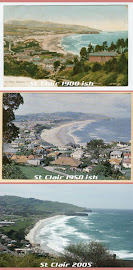Dunedin's Ocean Beach Domain is the frontline in an ongoing battle between sea and land that has serious implications for the low-lying suburbs behind the dunes. The forces at work, not least the hand of man, have shaped a significantly modified environment.
Change has been brought about by the pressure for raw resources in a developing city, the introduction of marram grass and ultimately the need to tame the coast for the physical protection of the city.
There are lessons here for those who are prepared to look at the mistakes of the past, say Paul Pope, of the Dunedin Amenities Society, and the late John Perry.
• Kaituna
Ocean Beach is a highly modified environment. The normal activity and movement of sand has been altered in favour of a more stable landscape. The former back-dune areas have been extensively mined and become recreation areas.
The coastline still stretches from the St Clair cliffs in the west to Lawyers Head in the east, but the sand dunes have become much thinner and steeper.
In 1848 in the west around St Clair, the sand hills were much smaller and lower, and the mouth of a lagoon ran through these dunes. They accumulated and grew as you moved east towards Lawyers Head.
High ground was in the west at the St Clair hills and in the east at the beginning of Otago Peninsula and beyond them, Otago Harbour and its extended tidal areas.
Between these features was a low-lying wetland named Kaituna. It was covered with silver tussock, rushes and flax and was an area of traditional food-gathering for Maori who sought tuna (eel), pukeko and weka.
There is also evidence that the Kaituna area was once thick with trees, probably kahikatea. They lay buried under the surface of the wetland and were often dug up and used as firewood by early settlers.
A significant feature was a track along the landward edge of the sand hills, which provided easy access to Kaituna.
By 1876 the urban growth of Dunedin had pushed housing to the edge of the sand hills at Ocean Beach. Sand was being removed constantly by householders to raise the level of their sections. Occasional floods are reported in the 1870s, but mostly from the harbour, into South Dunedin.
On one occasion a Mrs Rae and her two daughters were rescued by a gasworks boat crew from Rankeilor St. Their dog was reportedly left behind.
 Dunedin's battle of dunes
Dunedin's battle of dunes